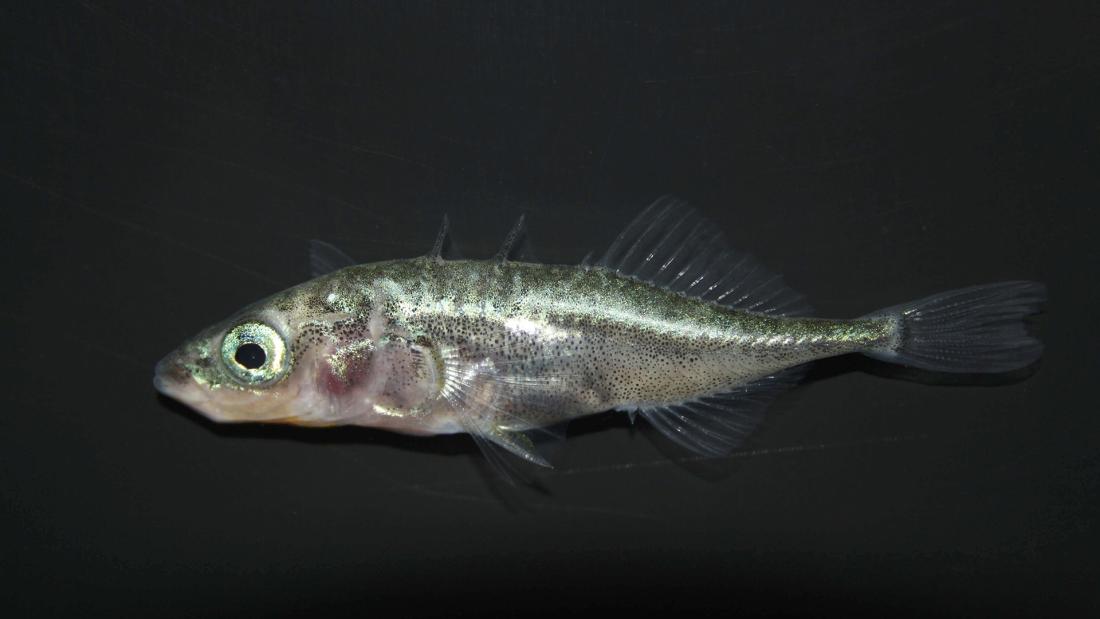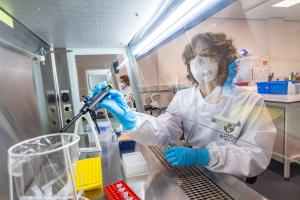The accidental discovery of fossilised three-spine stickleback bones dating back 12 thousand years, has enabled scientist to confirm parallel evolution, or evolutionary changes or adaptions which take place repeatedly.
After the ice sheets melted at the end of the last ice age around 10-20,000 years ago, there was an uplift in land, forming many coastal lakes. Threespine sticklebacks became trapped but adapted to their new freshwater habitats.
This happened repeatedly across the Northern Hemisphere with freshwater sticklebacks evolving the same changes in behaviour, changes in appearance and functions. This makes them an ideal ‘model’ to study parallel evolution.
Normally, scientists compare present-day freshwater and marine populations, assuming that the present-day marine population is representative of the ancestral population of the freshwater sticklebacks. While this is a useful approximation, marine sticklebacks have also been evolving, and present-day marine fish may differ in important ways from the ancestral fish that originally colonised freshwater habitats.
Following the extraction of DNA from the newly discovered, ancient stickleback bones, a new study, published in Current Biology, (https://doi.org/10.1016/j.cub.2021.02.027) combines the fields of ancient DNA, evolutionary genomics and geology to compare the genomes of present-day sticklebacks and their ancestors that first colonised the same freshwater lakes 12,000 years ago.
Dr Andrew Foote of Bangor University explains:
“Although these bones belong to sticklebacks that died thousands of years ago, when most of Scandinavia was still covered by a giant ice sheet, they still contain fragments of DNA. These genetic sequences provide us with a window into the deep past and to the early stages of freshwater adaptation.”

Sequencing 12,000 year-old sticklebacks
Dr Andrew Foote teamed up with Prof. Tom Gilbert of the University of Copenhagen to use the state-of-the-art ancient DNA laboratory and methods to sequence the genomes of the two 12,000 year-old sticklebacks from Northern Norway.
“Research on threespine sticklebacks over the last 20 years has provided key insights into the genetic basis of parallel adaptation. We have found that adaptation can proceed via newly arising mutations, but often involves re-use of already existing genetic variation that spreads among populations,” explains Dr Felicity Jones of the Friedrich Miescher Laboratory of the Max Planck Society in Tübingen.
“It is really striking that we could detect variants known to be adaptive to freshwater in one single marine colonizer by overcoming all the challenges related to sequencing ancient DNA. This conclusively demonstrates that freshwater-adaptive genetic variants were present in the stickleback populations that colonised freshwater lakes from the sea thousands of years ago.” says lead author Melanie Kirch, a PhD student at the Friedrich Miescher Laboratory of the Max Planck society in Tübingen.
However, she cautioned:
“Our results show that this highly repeatable process that we call parallel evolution does have some constraints. Even when the colonizing ancestor carried genetic variants known to be adaptive in freshwater, these variants are not always present in the contemporary population. This tells us that even beneficial freshwater-adaptive variants can be lost during the evolutionary process of adaptation, likely by random chance – a process known as ‘genetic drift’.
By providing a window back in time, ancient genomes enable us to directly look at the genetic makeup of ancestors, track adaptation over timescales of thousands of years and better understand the evolutionary process. From this, biologists can improve models and gain insight into factors that influence the direction, speed and molecular basis of evolution in the wild.”
The bones were discovered by Norwegian geologists studying the strong land uplift that has occurred in the Norwegian coastline since the disappearance of the heavy Scandinavian ice sheet. Following the land emergence, many coastal lakes formed. The sediments found at the bottom of such isolation lakes contain a record of the shift from marine to freshwater environments. By retrieving sediment cores from isolation lakes, geologists can study the transition in sediment layers and use radiocarbon dating to reconstruct the relative sea-level history in detail.
The Norwegian geologists stumbled upon ancient stickleback bones in several sediment cores from coastal lakes.
“The fish bones we washed out from our sediment samples were amazingly well preserved and could immediately be identified as threespine stickleback”, says geologist Anders Romundset at the Geological Survey of Norway (NGU).
“We determined the age of the bones by radiocarbon dating terrestrial plant remains found at the same stratigraphic levels. Sediment analyses also show the ecological context of the bones. The stickleback lived and died in brackish water at the time when the lakes were close to being disconnected from the sea”, the geologist explains.
Because the bones were found in a sediment layer representing the transition from a marine to a freshwater habitat, the ancient genomes contained the genetic variation associated with adaptation to the marine habitat, but with some genes showing a signature of adaptation to freshwater.
Three spined stickleback






